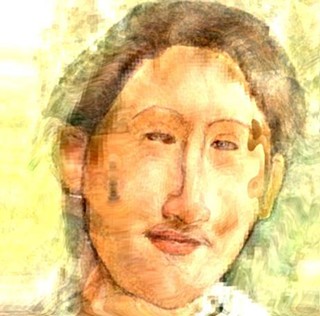Writer-director Peter Van Slyke assembled his latest Gaslight Theatre show as a prefabricated unit from his Spoofs 'R' Us factory.
The Adventures of the Freedom League of America, or Tights Make Right, follows Gaslight's 30-year format of taking the template of some pop-culture genre, twisting it to the point of ridiculousness, pockmarking it with terrible puns, and propelling it—or, sometimes, halting it—with adaptations of rock and R&B standards from the '50s through the '70s.
There's nothing wrong with Freedom League of America. The pacing moves nicely; there are no dead patches in the script; the performances are as carefree as ever. It's just that the material lacks those mad flashes of inspiration that sometimes spark from the Gaslight stage.
Interestingly, while Van Slyke was going through the motions he perfected long ago, other members of the production team seem to have stepped up their efforts a bit. The sound effects are especially good, and loud, and bass-rich. The vocal arrangements, presumably by music director Linda Ackermann, involve more interesting four-part harmonies than usual. In the early scenes, choreographer Nancy La Viola has provided a few more intricate steps than usual—or perhaps it's just that the cast's better dancers happen to dominate the first part of the show.
If Tom Benson's scenic design doesn't break any new ground—there's the standard chase sequence against a moving backdrop, and a nice, intentionally hokey effect with lava flowing down a distant volcano—there is at least one amusing trick he doesn't often use, involving a miniature flying saucer sailing out over the audience. Really, is that any sillier than Phantom of the Opera's crashing chandelier?
Meanwhile, back at the story, perhaps one of the problems is that there are too many principal characters, and, consequently, some figures who initially seem important wind up being underused.
It's the 1960s, and the evil Wrebulons are intent on adding Earth to their interstellar empire. Luckily for us, they're opposed by an array of superheroes, the Freedom League of America. Why is it always American superheroes who shoulder the burden, without any help from the likes of Superlatvian or the Fiji Flash? You'd think internationalizing the action would boost foreign comic-book sales.
At any rate, we have not one world savior, but three: Megaman, who doubles as a bumbling newspaper reporter teamed with superior newswoman Lili Lark; Lady Liberty, who wears a stars-and-stripes hand-me-down from Wonder Woman; and The Streak, a guy who runs really fast. Unlike participants in a certain fad that lasted about six weeks in 1973, this Streak keeps his clothes on, which will be a relief to parents, but a disappointment to Aunt Martha. The trio is advised by a scientist called Professor Quest, whose chief duty is to look earthbound compared to the superheroes.
Opposing them is Zagoor, ruler of the Wrebulons, a man who can shoot deadly green rays from his fingertips, as if his dreadlocks weren't intimidating enough. He has a little henchman, Vlort, and a statuesque accomplice, Queen Galaxia, and they've recruited to their cause a greedy Earth industrialist named Franklin Tremble.
But there just isn't enough for all these characters to do. Tremble, played by longtime Gaslight favorite Armen Dirtadian, once he's assimilated, has only to spout a couple of lines from beneath a Darth Vader helmet. After some midpoint action, Lady Liberty and The Streak are pretty much sidelined until the climax, while Megaman does most of the heavy lifting (literally; at one point, he has to catch an auto that's been sent flying through the air during a Wrebulon rampage). Even Vlort, the obligatory smart-aleck part for Joe Cooper, doesn't get as many fresh wisecracks as he should.
Too bad, because the cast members are very good at what they do, insofar as the word "good" applies to their purpose. David Orley is an especially effective, sneering villain, and the others—including Gaslight regulars Mike Yarema, Charlie Hall, Sarah Vanek, Todd Thompson, Deborah Klingfus and Betsy Kruse Craig—perform with their usual breezy enthusiasm.
The post-show olio is a partial retread, a spoof of The Gong Show, with Cooper reprising his intentionally annoying Chuck Barris impersonation. On the night I attended, the audience was so mesmerized by Todd Thompson's cheesy rendition of "Copacabana" that he was allowed to continue well beyond the point in the song where he and his backup singers had stopped rehearsing. Charlie Hall's performance of "La Bamba" in a bee suit was actually quite good, and so, perversely, was a send-up of the Village People. Gaslight is always very good at doing bad.
As for the main show, it's not bad, just ordinary—the sort of baseline script to use as a comparison when Gaslight eventually does something above-average again.








